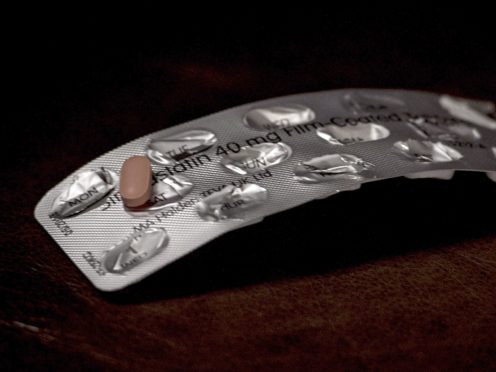
Around half of patients who are prescribed statins do not see their cholesterol drop to desired levels within two years, new research suggests.
Guidelines from the National Institute for Health and Care Excellence (Nice) aim for a 40% or more reduction in low density lipoprotein cholesterol from the treatment.
However a new study, published in journal Heart, found half of people (51%) had a “sub-optimal” response after 24 months on the drugs.
The researchers, from the University of Nottingham, analysed data from 165,411 patients, who were prescribed statins in primary care between 1990 and 2016.
They were on average 62 years old when they began treatment.
A total of 84,609 patients had a “sub-optimal” response after two years, and did not record a reduction in cholesterol of 40% or more.
The researchers note that a higher proportion of patients with a “sub-optimal” response were prescribed lower potency doses, compared to those with an “optimal” response.
Patients who did not reach the targeted levels were 22% more likely to develop cardiovascular disease than those who did respond well, the study also found.
The researchers said the study provides “real world evidence” about statins.
“These findings contribute to the debate on the effectiveness of statin therapy and highlight the need for personalised medicine in lipid management for patients,” they wrote.
Professor Metin Avkiran, associate medical director at the British Heart Foundation, said: “Statins are an important and proven treatment for lowering cholesterol and reducing the risk of a potentially fatal heart attack or stroke.
“Although this study suggests that not everyone who is prescribed statins manages to reduce their cholesterol sufficiently, it doesn’t explain why.
“It may be that these people have been prescribed low dose or low potency statins, that they are not taking the medication as prescribed, or that they are not responding well to the type of statins that they have been prescribed.
“If you have been prescribed statins, you should continue to take them regularly, as prescribed.
“If you have any concerns you should discuss your medication with your GP. ”
Professor Helen Stokes-Lampard, chairwoman of the Royal College of GPs, said: “When we prescribe medication, we have to rely on patients to make sure that they take it, both at the recommended dose and for the duration of time that we think will benefit them most.
“There is a substantial body of research showing that statins are safe and effective drugs for most people, and can reduce the risk of heart attacks and stroke, when prescribed appropriately – but controversy remains around their widespread use and their potential side-effects.
“There are complex reasons why patients choose not to take their prescribed medication, and mixed messaging around statins could be one of these.”

Enjoy the convenience of having The Sunday Post delivered as a digital ePaper straight to your smartphone, tablet or computer.
Subscribe for only £5.49 a month and enjoy all the benefits of the printed paper as a digital replica.
Subscribe